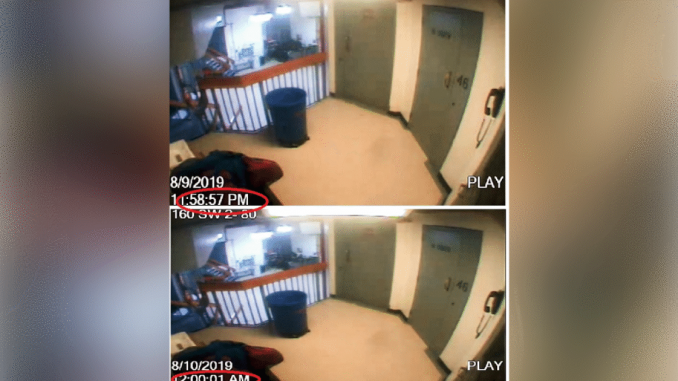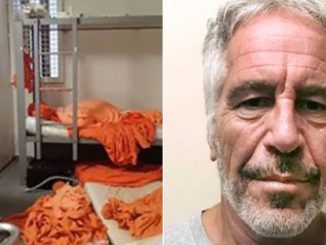
| Published July 7, 2025
Epstein Revisited: DOJ Memo Declares Suicide, But Missing Surveillance Footage Fuels Suspicion
More than five years after Jeffrey Epstein’s death inside a federal jail cell, new developments have reopened one of the most controversial chapters in recent American memory. While a freshly released DOJ–FBI memo concludes definitively that Epstein died by suicide and found no evidence of a secret “client list,” a separate revelation—that a full minute of surveillance footage appears to be missing—has reignited public suspicion.
At the center of this renewed scrutiny lies a fundamental question: Was justice truly served, or is the truth still being hidden? As federal authorities urge the public to move on, a growing number of Americans aren’t ready to let go.
🔎 DOJ Releases Memo: No “Client List,” No Foul Play
According to a DOJ–FBI investigative memo obtained by Axios, there is no evidence of a so-called Epstein ‘client list’, no signs of blackmail operations, and no proof that any prominent individuals were extorted.
“There are no outstanding criminal leads, no prosecutable cases, and no unexplained surveillance,” the memo states.
—DOJ–FBI Internal Review, July 2025
The video footage reviewed by federal agents showed no one entering or leaving Epstein’s cell block during the critical hours. The findings directly contradict years of speculation that Epstein may have been murdered to protect high-profile associates.
Perhaps most notably, Trump-era loyalists—FBI Director Kash Patel and Deputy Dan Bongino—both publicly affirmed the memo’s conclusions, stating Epstein died by suicide and that the investigation has run its full course.
🎥 The Gateway Pundit: One Minute Missing
However, not everyone is convinced. A separate report from The Gateway Pundit, featuring analysis by Jason Sullivan of UNLEASHED.news, claims that a critical 60-second segment is missing from the surveillance footage released to the public.
According to the report, the timestamp jumps from 11:59 to 12:00 AM—with no explanation from the DOJ. While the DOJ insists the video is authentic and unaltered, critics argue the missing minute raises legitimate concerns about potential tampering or withholding of crucial evidence.
“If Epstein was the most watched prisoner in America, how do we explain the cut?”
—Jason Sullivan, OSINT Analyst
The absence of even one minute, some argue, undermines public confidence in the government’s account—especially given the Epstein case’s long shadow over elites in politics, finance, and entertainment.
🔥 Public Reaction: Divide Widens
While legacy media and federal officials urge the public to accept the case as closed, many online remain defiant. Elon Musk and conservative influencers have questioned the official narrative, amplifying calls for a full, unredacted disclosure of Epstein’s files.
On the other side, establishment voices insist that conspiracy theorists are grasping at straws—especially now that former skeptics like Patel and Bongino have accepted the suicide ruling.
⚖️ The Bigger Picture: Trust on the Line
This new controversy puts the spotlight not just on Epstein’s death—but on institutional credibility. At a time when public trust in the DOJ, FBI, and mainstream media is eroding, even a minor discrepancy—like a 60-second cut—can fuel national doubt.
Whether this missing minute holds any significance remains to be seen. But in a post-truth age, perception may matter more than proof.
The FBI earlier determined that Epstein did commit suicide in August 2019.
And the DOJ-FBI also released a 10-hour video on Sunday from outside Jeffrey Epstein’s jail cell.
** The full video is posted at the DOJ website here.
If you follow the full video you can see for yourself that the video is cut off at 11:59:00.

The video feed then restarts exactly at 12:00:00.

Where is the missing video?
 Implications
Implications
-
Government Transparency Is in Question
The DOJ’s removal—or unexplained absence—of a 60-second segment from the Epstein surveillance video raises serious doubts about whether federal agencies are being honest with the public. If they can edit or omit evidence in one of the most high-profile cases in modern history, what else are they willing to hide? -
The Powerful Still Appear Untouchable
Despite years of speculation, high-profile connections, and documented flights on Epstein’s private jet, no new names have been exposed and no additional indictments filed. The DOJ’s memo conveniently closes the door on deeper investigations—just as trust in institutions reaches historic lows. -
Conspiracy “Theorists” May Have Grounds
The establishment continues to label Epstein-related speculation as “conspiracy theories,” yet every cover-up or missing piece of evidence only strengthens public skepticism. When official stories shift, and evidence mysteriously disappears, the label starts to lose meaning. -
Shifting Loyalties Raise Red Flags
Former Trump insiders like Kash Patel and Dan Bongino now back the official suicide narrative—despite years of questioning it. Their reversal, whether due to pressure or political calculation, fuels concern that even once-trusted voices may be folding into the same system they once fought against. -
Media and Public Are Growing Apart
Mainstream outlets echo the DOJ line, while independent voices and everyday Americans remain unconvinced. This divide reflects a broader cultural shift: Americans no longer assume the government or the media are telling the whole truth—especially when elite reputations are on the line. -
The Epstein Case Isn’t Over—It’s a Litmus Test
Whether Epstein died by suicide or not, the lack of full disclosure proves the system still bends to shield certain people. The case has become a symbol of two-tiered justice—one for the elite, another for everyone else. How the public responds could determine how much accountability the powerful face in the future.
 Overall Takeaway:
Overall Takeaway:
CONCLUSION
The DOJ may insist that Jeffrey Epstein’s death was a suicide and that there’s no client list worth pursuing—but the missing minute of surveillance footage tells a different story. In an age when political cover-ups are treated as routine and the powerful rarely face consequences, Americans have every right to question what they’re being told.
This isn’t just about Epstein. It’s about a system that protects its own, conceals the truth, and expects the public to quietly move along. But the missing footage, the unanswered questions, and the sudden unity of former skeptics with the official narrative all suggest one thing: the real story hasn’t been told.
Until there is full transparency—unedited, unfiltered, and untouchable—the Epstein case remains a symbol of something far deeper: the growing gap between the truth and what the government wants us to believe.





Be the first to comment